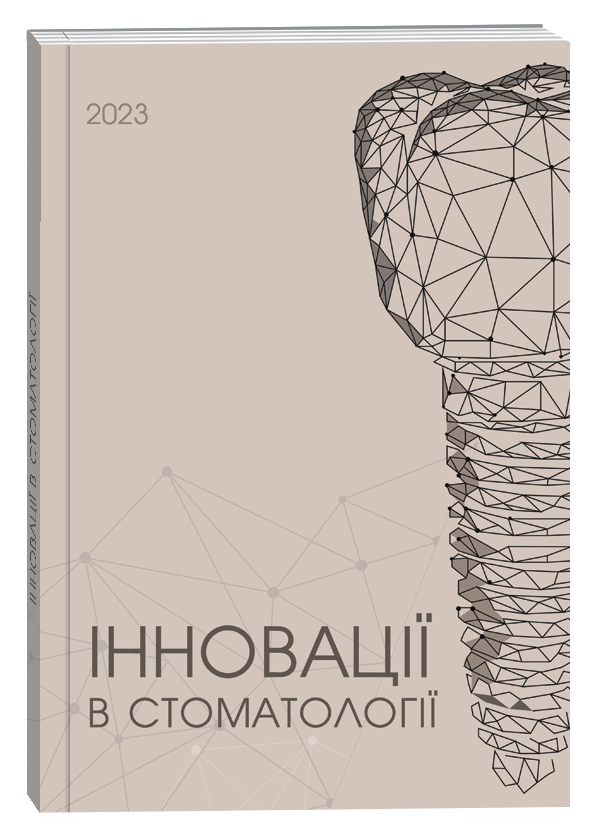CORRECTION OF PESTICIDE-INDUCED CHANGES IN MARKERS OF MICROBIAL CONTAMINATION AND ANTIMICROBIAL PROTECTION OF RAT ORAL FLUID VIA A THERAPEUTIC AND PROPHYLACTIC COMPLEX
DOI:
https://doi.org/10.35220/2523-420X/2024.4.10Keywords:
pesticide load, oral fluid, rats, experiment, biochemical markersAbstract
Pesticide exposure, particularly through the use of the synthetic pyrethroid α-cypermethrin, can adversely affect the microbiological balance of the oral cavity, thereby exacerbating the development of carious lesions. The combination of pesticide factors with a high-carbohydrate (cariogenic) diet further complicates the state of the local antimicrobial defense system, manifesting as a decrease in lysozyme activity, an increase in urease activity, and the progression of dysbiosis. The purpose of the study was to evaluate the effect of a developed therapeutic and prophylactic complex on indicators of microbial colonization and the antimicrobial defense of oral fluid in rats under conditions of prolonged pesticide exposure and a cariogenic diet. Materials and methods. The experiment involved 40 one-month-old Wistar rats, which were divided into five groups: an intact group; a group receiving a cariogenic diet; a group administered α-cypermethrin orally at a dose of 10 mg/kg; a group subjected to both a cariogenic diet and α-cypermethrin; and a group receiving a cariogenic diet, α-cypermethrin, and the therapeutic-prophylactic complex. The total duration of the experiment was 2 months. Lysozyme and urease activities in the oral fluid were measured, and the degree of dysbiosis was calculated. Research results. The combined action of α-cypermethrin and a cariogenic diet caused the most pronounced changes in oral fluid antimicrobial parameters: reduced lysozyme activity, increased urease activity, and a higher dysbiosis index. The use of the therapeutic and prophylactic complex significantly mitigated the damage from these harmful factors, restoring antimicrobial defense in the oral cavity and alleviating the course of the cariogenic process. Conclusions. The developed therapeutic and prophylactic complex effectively corrects the negative impact of α-cypermethrin and a high-sugar diet on the microbial composition and nonspecific antimicrobial defense of the oral cavity, which may have practical implications for preventing carious lesions under prolonged pesticide exposure.
References
Afolabi O.K., Aderibigbe F.A., Folarin D.T., Arinola A., Wusu A.D. Oxidative stress and inflammation following sub-lethal oral exposure of cypermethrin in rats: mitigating potential of epicatechin. Heliyon. 2019. № 5(8). Р. e02274. doi: 10.1016/j.heliyon.2019.e02274.
Ahamad A., Kumar J. Pyrethroid Pesticides: An Overview on Classification, Toxicological Assessment and Monitoring. J. Hazard. Mater. Adv. 2023. № 10. Р. 100284. doi: 10.1016/j.hazadv.2023.100284.
Yue S., Yuan Q., Shen Q., Xu Y., Wang P., Si M., Zhao M. Multiomics implicate gut microbiota in low cypermethrin (CP) exposure induced multiorgan toxicological effects in pubertal male rats. J Hazard Mater. 2023. № 458. Р. 131721. doi: 10.1016/j.jhazmat.2023.131721.
European convention for the protection of vertebrale animals used for experimental and other scientific purposes. – Strasburg.Council of Europe, 1986. 123. Р. 51.
Наказ України «Про затвердження Порядку проведення науковими установами дослідів, експериментів на тваринах». Міністерство освіти і науки України. 2012. № 249.
Експериментальні методи дослідження стимуляторів остеогенезу / А.П. Левицький та ін. : методичні рекомендації. Київ : ГФЦ, 2005. 50 с.
Рогач І. М., Керецман А. О., Сіткар А. Д. Правильно вибраний метод статистичного аналізу – шлях до якісної інтерпретації даних медичних досліджень. Науковий вісник Ужгородського університету. 2017. Вип. 2. С. 124-28.







